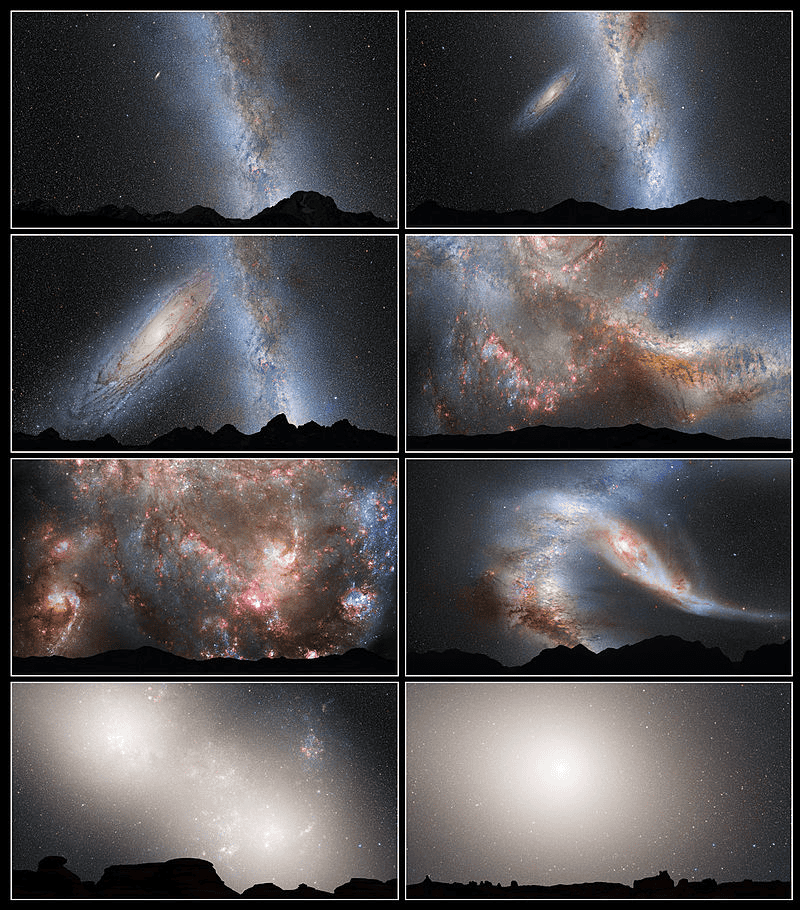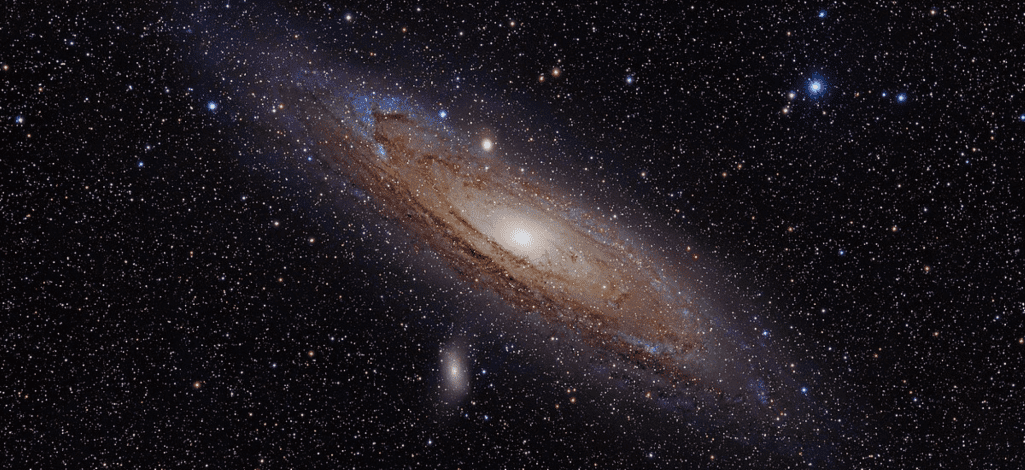Follow Us @
Andromeda Galaxy: the mysteries and curiosities of our cosmic neighbor
– best Ai and Ai related updates, fresh and up to date Ai technologies and best Ai Opportunities near you!
Many astronomers eagerly await this time of year. This is the best time to use our best telescopes to take a peek at our most beautiful and mysterious neighbor. Of course, I'm talking about the Andromeda Galaxy! The closest spiral galaxy to the Milky Way, it is a fascinating object of study that helps us unravel the secrets of the Universe and better understand our own galaxy. Our cosmic neighbor is full of mysteries and curiosities that intrigue scientists, and has already been at the center of some of the most important discoveries in Astronomy.
Andromeda is a true celebrity in the world of astronomy, among professionals and amateurs alike. At “only” 2.5 million light-years away, and with a diameter of around 200,000 light-years, it becomes an easy target for telescopes, even the most modest ones, providing a breathtaking visual spectacle. It is important to say that observing Andromeda is like looking through a window into the past. Thanks to its distance from us, the muse we observe through this window is now around 2 million and 500 thousand years older. But it is certainly still beautiful!

Like the Milky Way, Andromeda is a barred spiral galaxy, which means that it is formed by spiral arms joined by a central bar-shaped structure. However, Andromeda is a giant when compared to our galaxy, it is more than twice the size and has about a trillion stars, compared to “only” 400 billion in the Milky Way. It is the largest galaxy in the Local Group, but our neighbor is “barred”, being only slightly more massive than the Milky Way.
Read more:
The earliest record of Andromeda occurred in the 10th century, when the Persian astronomer al-Sufi described in his “Book of Fixed Stars” a “small cloud” in the sky, in the direction of the constellation Andromeda. Note that al-Sufi observed the galaxy well before the invention of the telescope. Yes, the Andromeda Galaxy is one of the few galaxies visible to the naked eye. However, without the aid of optical instruments, our neighbor is seen only as a small speck. So much so that until 100 years ago, it was known as the “Great Nebula of Andromeda”.

In 1924, astronomer Edwin Hubble, using the world's largest telescope at the time, the 2.5-meter Hooker telescope, was able to observe individual stars and identify some Cepheid variables in that cloud. These were the key to Hubble's measuring the distance to Andromeda, using the method developed by Henrietta Leavitt. He concluded decisively that the object was not a cluster of stars and gases within our Milky Way, but rather an entirely independent galaxy at a significant distance from our own. This discovery revolutionized astronomy, expanding our view of the cosmos, and was fundamental to the development of the concept of an expanding universe, leading to the formulation of the Big Bang theory.
This love for our space neighbor may seem platonic, somewhat distant, but it is only for a “short time”. Studies show that there is a mutual attraction between Andromeda and the Milky Way. The two galaxies are approaching at a speed of 110 kilometers per second, which could lead to a warm encounter in about 4 billion years.
Technically, this encounter is called a “collision” or “merger” of galaxies. But calm down, folks, there’s no need to panic or buy a galaxy helmet! Collisions between galaxies are relatively common events in the Universe. Andromeda and the Milky Way itself are the result of collisions between other smaller galaxies in the past. Due to the enormous void between the stars, they shouldn’t collide during the collision of their galaxies. Instead, what should occur is a majestic gravitational dance, with the stars of the two galaxies mixing and rearranging themselves, forming a new and gigantic galaxy, which some astronomers have already nicknamed “Milkomeda”!

It would be an incredible sight if we could see the Andromeda Galaxy approaching and merging with the Milky Way. But there’s a problem… Even if humanity doesn’t destroy itself or make life on Earth impossible by then, our Sun probably will have done so. In 4 billion years, the Sun will have reached its Red Giant phase and turned our planet into hell. So, if humanity still exists, or any civilization that has inherited our passion for the Universe, will have to watch this fabulous galactic encounter from a new home on Mars or one of Jupiter’s moons.
Furthermore, recent studies suggest that this collision may not happen as soon as previously thought. Observations made with the European Space Agency's Gaia space telescope indicate that Andromeda is moving more slowly and in a slightly different direction than previously estimated. This means that the collision could happen in the even more distant future, perhaps 6 billion years from now, or even that the two galaxies will simply “graze” each other, without completely merging.
Humanity has been in love with this smoky speck in the sky for centuries. And ever since we first gazed at its magnificent silhouette through telescopes, we have been amazed by the mystery and grandeur it represents. The Andromeda Galaxy fascinates us not only for its beauty, but for everything it reveals about the Universe and the future it holds for us. For now, we continue to spy on our cosmic neighbor, dreaming of the future encounter between our galaxies. A meeting that is set, but for a time so distant that humanity, as we know it, will probably no longer be here to witness it.
Andromeda Galaxy: the mysteries and curiosities of our cosmic neighbor
Follow AFRILATEST on Google News and receive alerts for the main trending Law and layers near you, accident lawyers, insurance lawyer, robotic Lawyer and lots more! Andromeda Galaxy: the mysteries and curiosities of our cosmic neighbor
SHARE POST AND EARN REWARDS:
Join our Audience reward campaign and make money reading articles, shares, likes and comment >> Join reward Program
FIRST TIME REACTIONS:
Be the first to leave us a comment – Andromeda Galaxy: the mysteries and curiosities of our cosmic neighbor
, down the comment section. click allow to follow this topic and get firsthand daily updates.
JOIN US ON OUR SOCIAL MEDIA: << FACEBOOK >> | << WHATSAPP >> | << TELEGRAM >> | << TWITTER >
Andromeda Galaxy: the mysteries and curiosities of our cosmic neighbor



